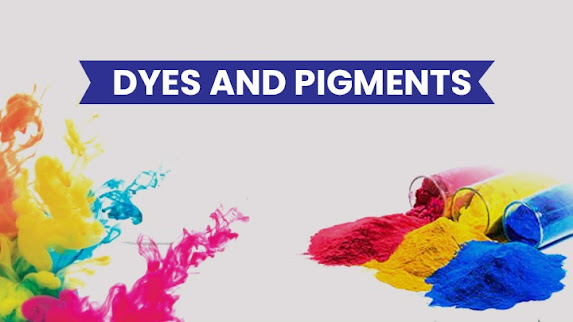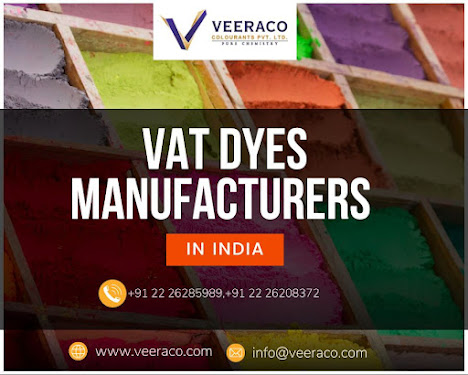Fabric made by acrylic dyes manufacturers in India is often referred to as polyacrylonitrile, acrylic, or acrylonitrile.
Synthetic polyacrylonitrile polymer is the fabric's main component. Variations
in the fabrics thread count range from 18 to 100. Despite having a low fabric
breathability, it is very moisture-wicking. It is quite good at retaining heat.
Acrylic fabrics have a very high stretch
ability. The likelihood of piling or bubbling is very high. The USA
is the nation where the fabric was first made. Presently, China is the largest
exporting and producing nation. Warm washing temperatures are advised. They are frequently used in garments including sweaters,
hoodies, boots, boot linings, hats, gloves, sporting gear, carpeting, blankets,
roller brushes, upholstery, area rugs, protective gear, wigs, and hair
extensions.
What Is Acrylic Fabric Made of?
Fabrics with acrylic fibres are
created using the synthetic material acrylonitrile. Acrylic fabric is made from
a form of fibre that is derived from fossil fuels since it is created by
reacting specific chemicals with a variety of monomers that have a petroleum or
coal base.
Since the acrylic fabric is one of
the least breathable textile types available, it is preferred for applications
requiring heat retention. Acrylic Dyes
Manufacturers, For instance, tracksuits, hoodies, and athletic pants are
frequently constructed of acrylic fabric, which is frequently used in athletic
equipment. However, there are worries that acrylic could be cancer-causing, so
it might be best to avoid coming into touch with this fibre.
Authentic acrylic fibre must contain
at least 85% acrylonitrile; it may also contain minor percentages of other
synthetic substances. The properties of the finished cloth will differ
depending on the substances that are combined with acrylonitrile.
The Evolution of Acrylic Fabrics
The American DuPont Corporation
invented acrylic fibre first, as it did with many other synthetic textile
fibres. When acrylic fibre was created in the 1940s, the world saw this
innovation as simply the next step in DuPont's quick rise to a dominant
position in the global textile markets. This company had already gained
notoriety throughout the world for the development of nylon and the
mainstreaming of polyester production.
The advantages of acrylic became
increasingly clear over around ten years, and this fabric steadily increased
its market share. Consumers and business leaders at the time believed that
synthetic fibres will soon completely replace natural fabrics. Consumers
started to worry about acrylic's flammability over time, though, especially
since wool, which acrylic was meant to replace, has one of the best
flammability profiles of any fabric. However, DuPont is no longer the
main supplier of acrylic fibre. The market for acrylic fibre is now led by
businesses in China, India, Indonesia, and other ASEAN nations rather than this
American firm. Similar to how emerging markets in developing countries want
considerably less acrylic fabric, so does the American consumer market.
Washing
Remember that clothing made of
acrylic fabric can be damaged by both hot and cold water. As a result, you
should always use warm water to wash acrylic apparel. When washed in water that
is too hot, acrylic can melt and harm your washing machine or other items in
the load. When washed in the cold, acrylic
can start to become stiff and rigid.
Additionally, more than any other
fabric, the acrylic fabric is more likely to pill. A piece of clothing covered
in pills the same colour as the clothes you cleaned it with will result from
washing an acrylic item with clothes that don't nearly match its hue.
Customers who purchase dyes can
purchase them from retailers who sell them or from renowned top dye manufacturers in India.
How Is Acrylic Fabric Made?
There are seven phases involved in
the creation of acrylic fabrics.
Step 1:
Polymerization
The chemical process known as free
radical polymerization uses a water-based solution to produce the acrylonitrile
polymer polyacrylonitrile.
Step 2:
Dissolving
Using a powerful chemical solvent,
this polymer is broken down.
Step3:
Extruding
After that, the substance, which
resembles gel, is prepared to be spun into acrylic fabric by an extruder.
Step 4:
Wet or dry spinning
Wet spinning or dry spinning, which
includes evaporating the solvent with a stream of hot gas, is the common method
for coagulating these fibres in a solution of the same solvent.
Step 5:
Washing and stretching
In order to create long, thin
filaments that may be spun into yarn, the resulting fibres are then cleaned,
stretched, and crimped.
Step 6:
Leading
After being spun into yarn, acrylic
fibres are put onto bobbins and delivered to companies that make textile
products.
Step 7:
Weaving
These producers then use this
acrylic yarn for clothing, carpeting, or a variety of other uses.
In order to create long, thin
filaments that can be spun into yarn, the resulting fibres are next cleaned,
stretched, and crimped. Stretching acrylic fibres, like other synthetic textile
fibres, results in them being multiplied by many times their original length,
which lowers costs and boosts production efficiency. Stretching is necessary to
produce a usable end textile. Workers may also expose acrylic
fibre to different colours and treatments at the manufacturing plant or the
facility that produces textile products. For example, flame retardants are a
definite requirement for acrylic fabrics; without these harsh treatments, the
acrylic fabric would be extremely risky.
How is a fabric made of acrylic used?
● Used for clothes, including gloves,
hoodies, slacks, and many other sorts of cold-weather attire.
●
Utilised in rugs, upholstery, and
carpets for home ware products
●
For costumes and props
●
Regarding knitting supplies.
Top Acrylic Dyes Manufacturers in India is utilised in many of the same applications as this
extremely well-liked natural fibre since it is made to resemble wool. For
instance, clothing companies use acrylic fibre to create a variety of
cold-weather clothing items, including hoodies, slacks, gloves, mittens, and
sweaters. Additionally, carpeting, upholstery, rugs, and other historically
dominated by wool home ware product categories are all commonly made from
acrylic.
Although acrylic naturally resembles
wool quite closely, depending on the spinning technique employed, it can also
be made to resemble other fabrics, such as cotton. Manufacturers may create
acrylic materials that resemble fur, which might be helpful for costumes or
props.
One of the components of carbon
fibre, which is highly sought-after in industrial applications, is acrylic
fibre. Despite being extremely durable, acrylic fibre doesn't have many
industrial uses due to its flammability, which prevents it from being used in a
variety of industrial settings.
Knitting is one of the most popular
uses for acrylic fibre. Despite several drawbacks, acrylic knitting has a vital
role in the market for hobbyist knitters due to its inexpensive cost and
inability to lose colour.
Customers of dyes get their goods
from Dyes and Pigments Manufacturers in India or from retailers who sell those products.



